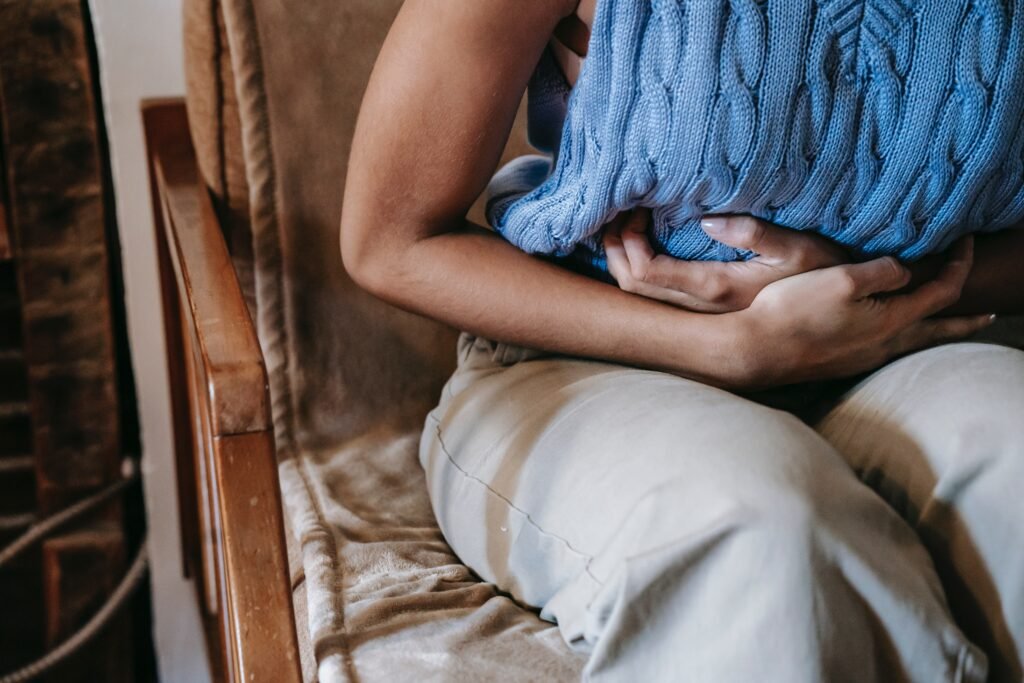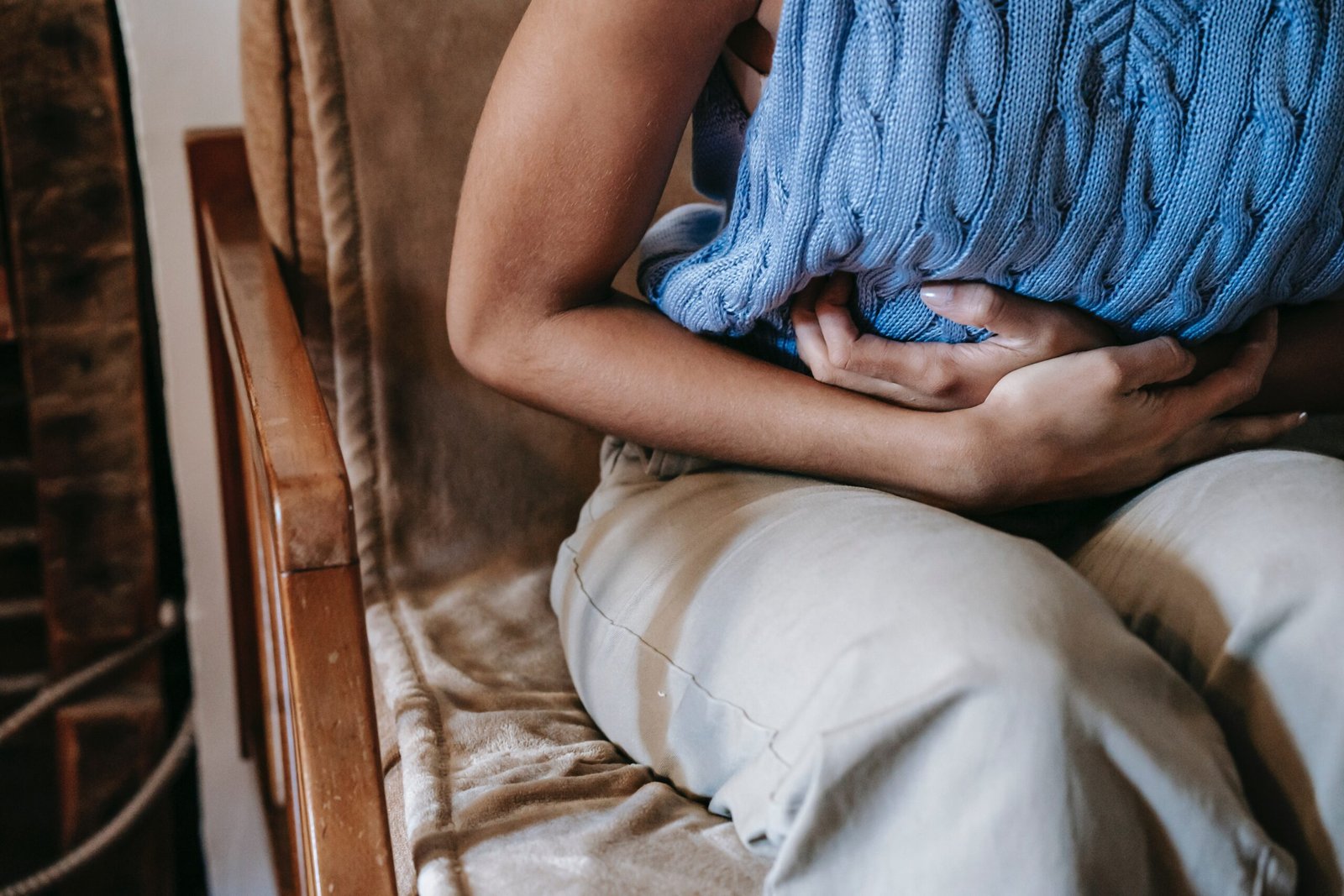Dysmenorrhea is another term for painful periods or menstruation. Menstruation occurs once a month when the uterus removes its lining. It is typical to have some pain, cramping, and discomfort during menstruation. Excessive pain that prevents you from working or attending school is not.

Dymenorrhea is classified into two types: main and secondary.
People with primary dysmenorrhea report pain before and during menstruation. Secondary dysmenorrhea occurs when normal periods become painful later in life. This can be caused by a disorder affecting the uterus or other pelvic organs, such as endometriosis or uterine fibroids.
What are the reasonsof Painful Periods?
It is not always feasible to pinpoint the source of painful menstrual cycles or Painful Periods. Some people are simply more prone to uncomfortable periods.
These dangers include:
- being under the age of 20
- having a family history of menstrual pain
- smoking
- having heavy menstrual bleeding
- having erratic phases
- never having had a child
- achieving puberty before the age of 11
A hormone called prostaglandin causes muscle contractions in your uterus that cause the lining to be expelled. These contractions have the potential to cause pain and inflammation. Prostaglandin levels rise just before menstruation begins.
Menstrual cramps can also be caused by an underlying medical condition, such as:
Premenstrual syndrome (PMS) .
PMS is a common condition caused by hormonal changes in the body that occur one to two weeks before menstruation. After the bleeding starts, the symptoms usually fade away.
Endometriosis.
This is a painful medical disorder in which cells from the uterine lining develop in other places of the body, most commonly on the fallopian tubes, ovaries, or pelvic tissue.
The presence of uterine fibroids.
Fibroids
are noncancerous tumors that can cause uterine pressure, abnormal menstruation, and pain, though they seldom cause symptoms.
Pelvic inflammatory disease(PID).
PID is a uterine, fallopian tube, or ovarian infection caused by sexually transmitted bacteria that causes inflammation and pain in the reproductive organs.
Adenomyosis.
This is an uncommon syndrome in which the uterine lining develops into the uterine muscle wall, causing inflammation, pressure, and pain. It may also result in longer or heavier periods.
Cervical stenosis
Cervical stenosis is an uncommon disorder in which the cervix is so small or narrow that menstrual flow is slowed, resulting in an increase in pressure inside the uterus that produces pain.
Treatment at home for Painful Periods
Painful menstrual periods can be relieved with at-home treatments. At-home experiments include the following:
- using a heating pad on your pelvic area or back
- massaging your abdomen
- taking a warm bath
- doing regular physical exercise
- eating light, nutritious meals
- practicing relaxation techniques or yoga
- taking anti-inflammatory medications such as ibuprofen several days before you expect your period
- taking vitamins and supplements such as:
- vitamin B-6
- vitamin B-1
- vitamin E
- omega-3 fatty acids
- calcium
- magnesium
- raising your legs or lying with your knees bent
- reducing your intake of salt, alcohol, caffeine, and sugar to prevent bloating
When to Consult a Doctor
If Painful Periods interferes with your ability to perform basic tasks each month, it’s time to see a gynecologist.
Discuss your symptoms with your doctor, especially if you are experiencing any of the following:
- pain persisting after IUD insertion
- a minimum of three painful menstrual periods
- clotting of the blood
- cramping combined with diarrhea and nausea
- Pain in the pelvis when not menstruating
Infections can cause cramping or pain in the pelvis. Untreated infection can lead to scar tissue that damages the pelvic organs and may result in infertility.
If you have symptoms of an infection, seek medical attention right away:
- fever
- severe pelvic ache
- unexpected pain, especially if you are pregnant
- odorous vaginal discharge
Diagnosis of Painful Periods
Your doctor will most likely take your medical history and perform a physical exam to determine the underlying reason of painful menstruation. A pelvic exam will be performed to look for any abnormalities in your reproductive system as well as signs of infection.
If your doctor suspects that an underlying condition is causing your symptoms, he or she may order imaging testing. These are some examples:
- an ultrasound
- a CT scan
- an MRI
Based on the results of your imaging tests, your doctor may recommend a laparoscopy. To see inside your abdominal cavity, a doctor will make small incisions in your belly and insert a fiber-optic tube with a camera at the end.
Medical treatment for Painful Periods
There are medical therapy options available in the event that self-care remedies are ineffective in relieving the discomfort associated with menstruation.
Your treatment will be tailored to the level of discomfort you are in as well as the underlying problem that is causing it. Antibiotics will be prescribed to you by your doctor in order to treat any sexually transmitted infections (STIs) or pelvic inflammatory disease (PID) that may be the source of your pain.
In addition, your physician might prescribe drugs for you, such as:
Nonsteroidal anti-inflammatory medications (NSAIDs).
You can purchase these medications over the counter, or your physician can write you a prescription for stronger NSAIDs.
Other drugs that alleviate pain.
This includes stronger pain drugs that are prescribed by a doctor as well as over-the-counter choices such as acetaminophen (Tylenol).
Antidepressants.
Mood swings are a common symptom of premenstrual syndrome (PMS), and some doctors recommend taking antidepressants to help manage them.
In addition, your physician could recommend that you investigate chemical birth control options. It is possible to use hormonal birth control in the form of a pill, patch, vaginal ring, injection, implant, or intrauterine device (IUD). Hormones stop ovulation, which reduces the likelihood of experiencing painful menstrual cramps.
Endometriosis and uterine fibroids can both be treated surgically. If other therapies have been tried without success, this may be a possibility for you. Endometriosis implants, uterine fibroids, and cysts can all be removed during surgery to treat the condition.
When various treatments have been unsuccessful and the patient is in a great deal of discomfort, a hysterectomy, which is the surgical removal of the uterus, may be considered as an option. If you get a hysterectomy, you will lose the ability to have children at any time in the future. If a person does not intend to have children or is past the age when they can have children, this is the most common circumstance in which they would choose this choice.

